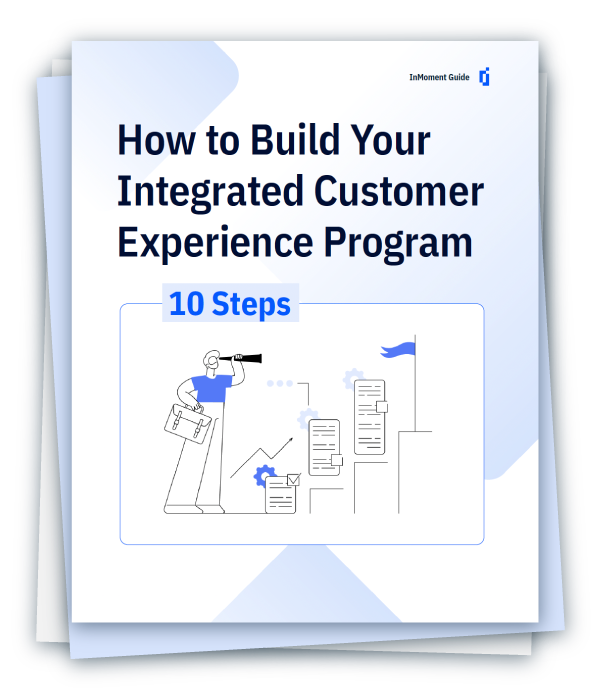Using Holistic Listening to Retain Employees—and Customers

It’s popular to believe that COVID-19 created the unprecedented employee exodus we’ve all come to know as The Great Resignation. For months now, we’ve seen brands struggle to retain employees as millions of workers across virtually every sector of the economy and society leave their jobs, citing a similarly diverse range of reasons for leaving. These include, but are by no means limited to, insufficient pay, hazardous work environments, and having to put up with belligerent customers.
What’s at the Root of the Struggle with Employee Retention?
Though it’s natural to assume that the timing of this event means it’s strictly a product of COVID, the truth about the Great Resignation and employee disengagement in general is that the pandemic didn’t create either phenomenon; it simply exacerbated existing employee issues. Factors like low pay or dangerous work existed long before COVID, which means that the disease isn’t the root cause of The Great Resignation so much as it’s the straw that broke the camel’s back.
The other hard truth that feeds into The Great Resignation is that, frankly, a lot of companies are having trouble retaining their workers because they never understood or invested in improving the employee experience (EX). These brands thus lack the resources, infrastructure, and capabilities necessary to rescue at-risk employee relationships, acquire new talent, and deliver on customer expectations in a time of great turmoil.
No matter where your organization falls on the EX maturity spectrum, one thing has become clear: improving employee engagement, retention, and acquisition requires a new, more holistic means of addressing employee behavior and commitment.
A Quick Note on Employee Burnout, Disengagement, and the Like
Before we get to those holistic means, though, I think it would be helpful to briefly touch on the difference between disengagement, disconnection, and another term I’m sure you’ve heard a lot recently: burnout.
The terms are not interchangeable; disengagement and disconnection refer to an employee’s lack of interest and/or investment in their work and organization’s mission. Meanwhile, burnout denotes feeling overwhelmed and mentally unwell as a result of said work or mission.
My goal with this piece is to help you anticipate and solve for disengagement before it leads to that burnout.
3 Elements of Holistic Employee Engagement
Element #1: Anticipate Changing Needs
The first element of thinking about employee engagement and commitment more holistically is being cognizant of how employee needs and systems will change tomorrow, not ‘just’ what they’re like today. This is particularly important to consider as Millennials’ and Gen Z-ers’ slice of the workforce continues to grow. One of the most important things these digital natives want is a chance for meaningful growth, and if they feel that your brand isn’t considering that or how their needs will change, they will quickly turn elsewhere to find it. With the rise of remote and hybrid work environments, respectively, employees have more options here than ever before.
Element #2: Readily Recognize Value
A second element that can affect employee engagement and commitment is whether or not they feel valued. It’s easy for employees who contribute to organization success to disengage if their contributions aren’t being recognized. In other words, if they feel underappreciated despite their commitment and day-to-day effort, they’ll become discontent and, ultimately, churn.
There are a number of ways to solve for this problem, such as creating a closed-loop process by which employees can contribute their insights and ideas. These processes are well-honed at best-in-class organizations—some brands not only incentivize idea submissions, but also give employees a cut of the savings their ideas generate.
Element #3: Foster Meaningful Connections
Finally, with the significant workplace changes we’re seeing, creating meaningful connections amongst coworkers and teams has become a critical challenge for leaders. Building sustainable workplace camaraderie in an often-remote work environment, the kind that truly leads to high-performing teams, is easier said than done.
But the same principles leading to healthy workplace relationships (communication, trust, vulnerability, empathy, kindness) must still exist and be built anew as team composition evolves. Brand leaders who can pull this off will have not only driven improved business outcomes like operational efficiency, but also have built a culture of high employee engagement, commitment, and retention.
Ensuring employees feel heard, understood, and connected are essential to your organization’s success, so the ability to ingest solicited, unsolicited, structured, and unstructured employee feedback is invaluable to finding actionable intelligence. This is especially important when you consider that employee perception of work is the next great diversity frontier. Sex, race, and gender identity are all highly important for organizations to consider, but I firmly believe that diversity in how we as employees perceive an efficient, effective workplace should be considered in a similar context.
A Better Tomorrow
Considering employee needs, making employees feel valued, creating sustainable camaraderie, and appreciating workplace diversity are all vital to engaging employees holistically, not just to preventing disengagement. Creating and sustaining a workplace environment built on these four pillars is no small task, but it’s what brands will need to achieve if they want to create meaningful experiences for their employees.
Do that, and your employees will return the favor in the form of greater passion and, ultimately, a greater investment in your customers’ experiences, creating greater success for your organization.



